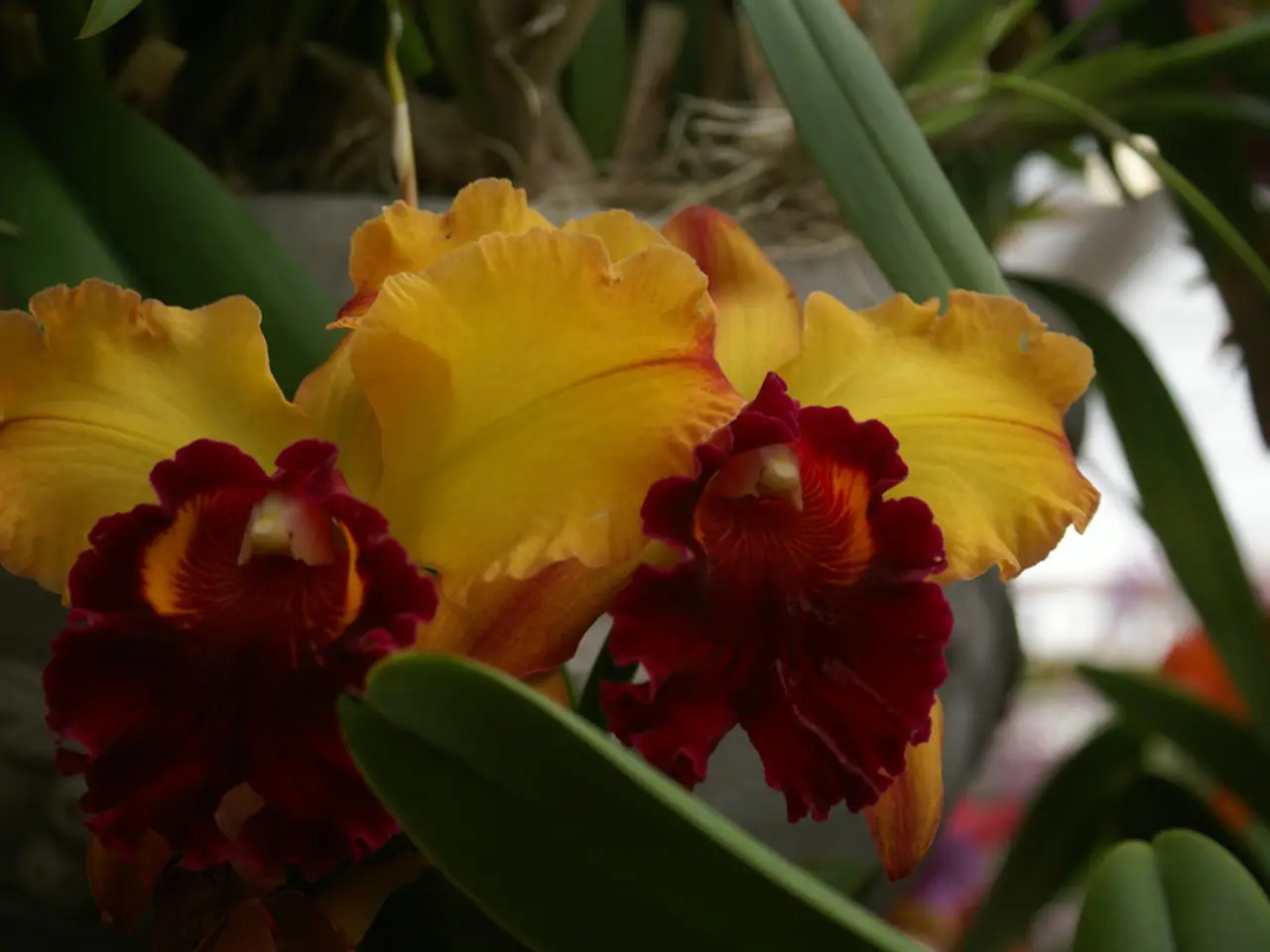Alliums Florishing Duration: A Gardener's Manual
In the world of gardening, alliums, also known as ornamental onions, are a delightful addition, offering a vibrant array of colours from purple, white, yellow, blue, and pink. These versatile flowers are not only easy to care for but also suitable for various garden conditions, from gravel gardens to small containers.
Glen, a gardening expert with over 15 years of experience in garden maintenance, design, and landscaping services, shares his insights on these blooming beauties.
To ensure a vibrant garden display year after year, allium bulbs should be planted every fall before the first frost. The ideal planting time allows the bulbs to establish roots for spring blooming. Plant bulbs about 4 inches deep and 2–4 inches apart, depending on the variety. For instance, Allium Sphaerocephalon bulbs should be planted 4 inches deep, 2 inches apart, in the fall, blooming from late spring to early summer.
To extend the bloom period of alliums, consider planting multiple varieties with staggered bloom times. Different alliums bloom at varying times from late spring through summer, so mixing varieties can lengthen the flowering season.
Alliums thrive best in full sun, which promotes healthy growth and flowering. Water moderately during growth but avoid excessive moisture, as alliums are drought tolerant. Proper planting depth and spacing are also crucial, with bulbs typically going 4 to 6 inches deep and spaced a few inches apart, allowing room for growth.
In cooler climates with winters and mild springs, alliums require a period of cold dormancy for proper spring blooming. However, in warmer zones (zones 8–11), it may be necessary to pre-chill bulbs to mimic natural winter conditions and promote better flowering. In very cold zones, protect bulbs with mulch or plant near rock walls to insulate them and help them survive harsh winters and bloom well in spring.
Alliums are loved by pollinators, making them an excellent choice for attracting bees and butterflies to your garden. Additionally, allium Moly blooms in early to mid-spring, while 'Purple Sensation' blooms in mid to late spring, providing a wonderful backdrop for other perennials in gardens.
It's important to note that pests like the allium leaf miner can damage allium bulbs and foliage, requiring regular monitoring and good garden hygiene. Well-draining soil is essential for allium growth, with sandy or loamy soils being ideal. Too much rain can lead to fungal diseases in alliums, while too little can stress the plants. Extreme heat can cause allium blooms to shrivel up prematurely.
Lastly, deadheading spent allium blooms encourages more flowers, and allium schubertii produces striking seed heads even after the flowers are gone.
Glen, the gardening expert, creates helpful content for a blog about gardening, sharing his extensive knowledge and passion for alliums with a wider audience. By following his tips and planting a succession of allium varieties in full sun in fall, using correct depth and spacing, and applying seasonal care like moderate watering and mulch, gardeners can effectively extend the overall bloom period of alliums from late spring through summer.
Glen's blog, focused on garden maintenance, design, and landscaping services, explores the home-and-garden lifestyle, emphasizing the importance of alliums in creating vibrant displays. To achieve a colorful home-and-garden setting with alliums, consider incorporating various allium varieties in your lifestyle, ensuring a long blooming period through proper planting and care.




